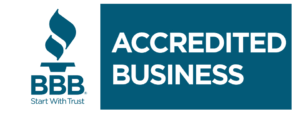Wisconsin Bankruptcy Exemptions
When you’re interested in filing for bankruptcy, there are a lot of factors to consider. Should you file Chapter 7 or Chapter 13? Or maybe even Chapter 11? Does it matter when you file? And often, most important to people is this question: Will I be able to keep my house, car, and other important personal property? The answer to that last question depends on whether or not those items are considered exempt from the bankruptcy proceedings. Because bankruptcy is nation-wide, there are certain exemptions that have been established at the federal level. Some states only allow those federal exemptions, others require you to use the state exemptions. Wisconsin is one of only 16 states that allows you to choose.
Residency Requirement
If you want to choose Wisconsin exemptions, you must have been a Wisconsin resident for about 2 ½ years. The law says that you must have lived in Wisconsin for at least 2 years, but it is not that clear-cut. If your domicile hasn’t been in the same state for over two years, the rules get more complicated. You’ll need to choose the state exemptions of the state that you lived in the longest during the 180 days immediately before the two years before filing. For example, if you plan to file on July 1, 2022, your two-and-a-half-year period would start January 1, 2019. Imagine that you were living in Iowa (for instance) on January 1, 2019 and moved to Wisconsin in May of that year. You would need to use Iowa state exemptions. If you moved to Wisconsin in March, though, you could choose to use Wisconsin exemptions or federal exemptions.
No Cherry-Picking
When deciding whether to use Wisconsin state exemptions or federal exemptions, it’s important to remember that it’s a slate of exemptions you’re choosing. You must accept all the exemptions in whichever slate you’ve gone with; you can’t pick a few from the Wisconsin list, and a few from the federal list to create the most advantageous situation for you. Given that fact, it’s wise to have one of the experts at Burr Law examine your particular situation to determine which set of exemptions most suits your needs.
What Are The Wisconsin Exemptions?
The most relevant Wisconsin exemptions are for your home, car, tools of your trade, and personal property. The homestead exemption in Wisconsin is $75,000 of the equity in the home, or $150,000 for joint filers. That compares to the federal exemption of $25,150 or $50,300 for joint filers. The exemption for your car is $4,000 (plus any unused portion of the $12,000 allowed for your personal property). Any tools of your trade (like business equipment, inventory, or actual tools) are at $15,000 compared to $2,525 for the federal exemption. Your personal property is exempt too, up to $12,000, as are your bank deposits up to $5,000. College savings accounts or tuition trust funds will not be touched. Only some retirement accounts apply, though. It really requires professional analysis to make the best choice.
Federal Nonbankruptcy Exemptions
The federal nonbankruptcy exemptions are federal exemption laws that exist outside of the Bankruptcy Code and protect property from creditors whether or not a bankruptcy case has been filed. By contrast, federal bankruptcy exemptions are listed in the Bankruptcy Code and provide protection only in a bankruptcy proceeding. If you are using Wisconsin state exemptions, you can still use the federal nonbankruptcy exemptions as a supplement for additional protection of your property, assuming you qualify for them. The qualifications vary, and the experts at Burr Law will be able to guide you in evaluating whether you can benefit from them. These federal nonbankruptcy exemptions include retirement benefits, death and disability benefits, survivor’s benefits, and other miscellaneous exemptions. Each has its own qualifications.
If you are filing for bankruptcy in the state of Wisconsin, you are fortunate to be able to decide whether the Wisconsin state exemptions or the federal exemptions will better protect your assets. The professionals at Burr Law have extensive experience in working with the exemptions, and will talk you through your options.


